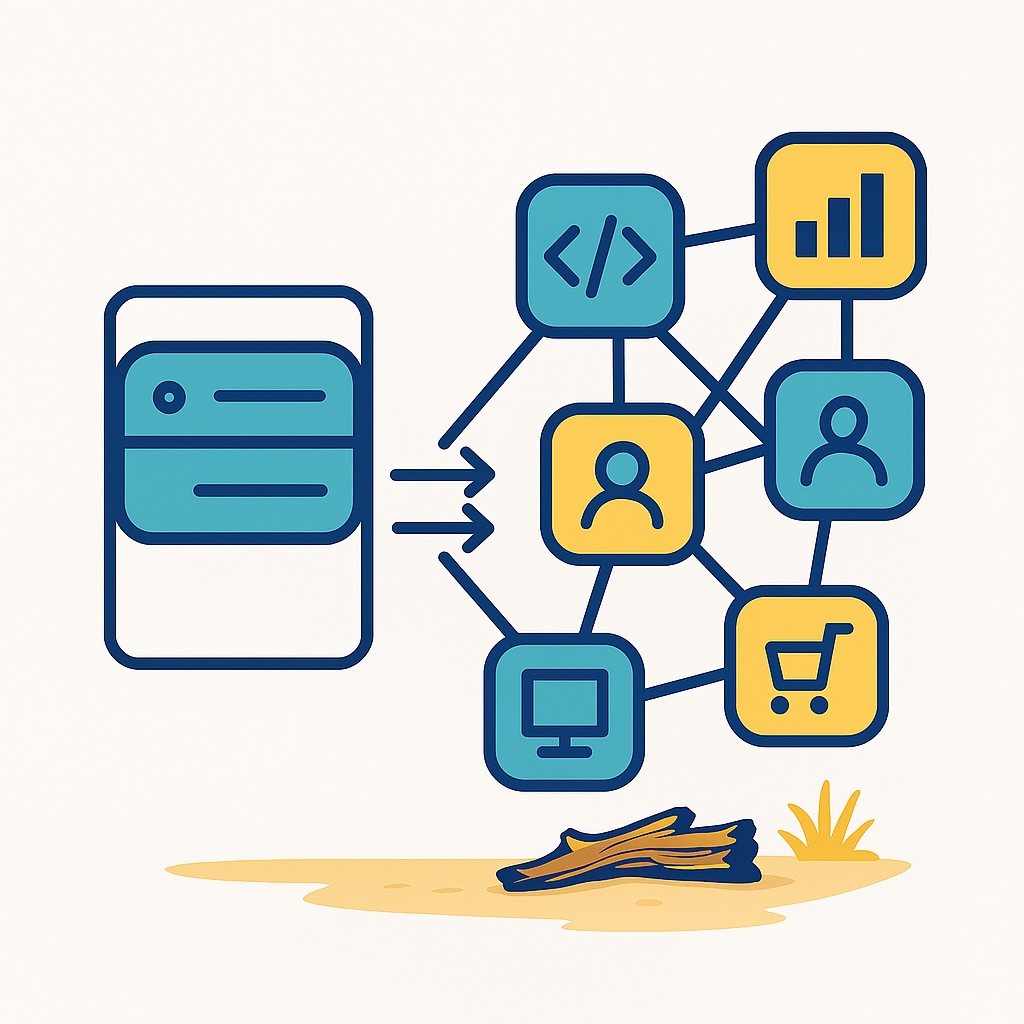Event-Driven Architecture (EDA): Benefits and Use Cases
Introduction
Event-Driven Architecture (EDA) differentiates itself through its ability to propagate state changes as events across distributed systems. This approach relies on producing, transmitting, and consuming events, delivering greater responsiveness and flexibility compared to traditional synchronous request-driven architectures. The rise of microservices, the Internet of Things, and real-time applications has propelled EDA adoption, as these contexts demand asynchronous, loosely coupled communication between components. In this article, we’ll explore EDA’s core principles, key benefits, architectural patterns, concrete use cases, and best practices to guide your implementation.
By Luc Bories
More about thisComparing Layered Architecture and Hexagonal Architecture (Ports & Adapters)
Introduction
Layered architecture has been a cornerstone of software design for decades, offering a familiar and straightforward structure that teams of all sizes can adopt. This model divides an application into distinct horizontal slices, where each layer has a specific responsibility, from user interface to data persistence. Its appeal lies in its clear separation of concerns and the ability to isolate changes within each layer. Hexagonal architecture, also known as Ports & Adapters, challenges this convention by promoting a more flexible, decoupled design that emphasizes the role of external interfaces and domain logic.
By Luc Bories
More about thisMonolithic Architecture: Foundations, Strengths, and Limitations of a Classic Style
Introduction
Monolithic architecture is one of the oldest and most widespread styles in software development. It is often seen as the natural starting point for many applications, especially in contexts where simplicity, rapid implementation, and consistency are key priorities. Although modern architectures such as microservices or serverless have gained popularity, the monolith remains highly relevant in many use cases. This article offers an in-depth exploration of this architectural style, highlighting its characteristics, advantages, limitations, and how it compares to other approaches.
By Luc Bories
More about thisServerless Architecture: Revolutionizing Web Development Without Servers
Introduction
The term “serverless architecture” may raise a few questions—let’s demystify it.
Serverless architecture is revolutionizing how modern applications are designed and deployed by offloading infrastructure management to cloud providers. Instead of provisioning, configuring, and maintaining dedicated servers or virtual machine clusters, development teams can focus on writing business logic. This paradigm directly addresses the agility and responsiveness demanded by today’s businesses, which aim to reduce time-to-market while optimizing operational costs.
By Luc Bories
More about thisMicroservices Architecture: Principles, Benefits, Challenges, and Use Cases
Introduction
In recent years, software development has undergone a profound transformation in how applications are designed, deployed, and maintained. This shift is largely driven by the rise of microservices architecture, which stands in contrast to traditional monolithic systems. In a world where businesses must innovate quickly, adapt to changing user needs, and ensure high availability, microservices offer a flexible and scalable solution to modern challenges. Yet behind this promise lies a set of technical, organizational, and cultural decisions that deserve careful exploration.
By Luc Bories
More about this